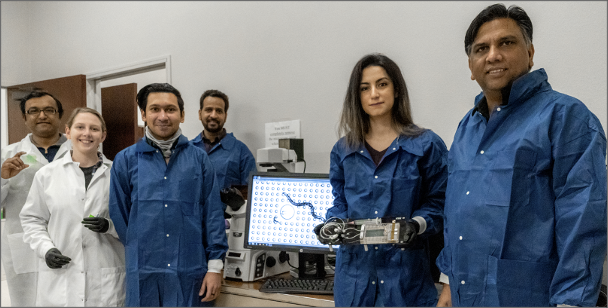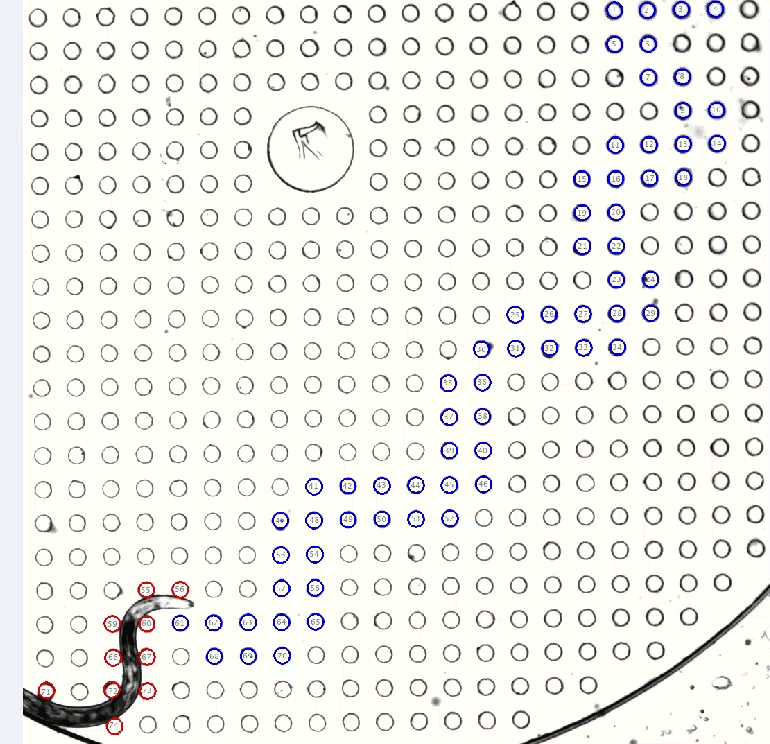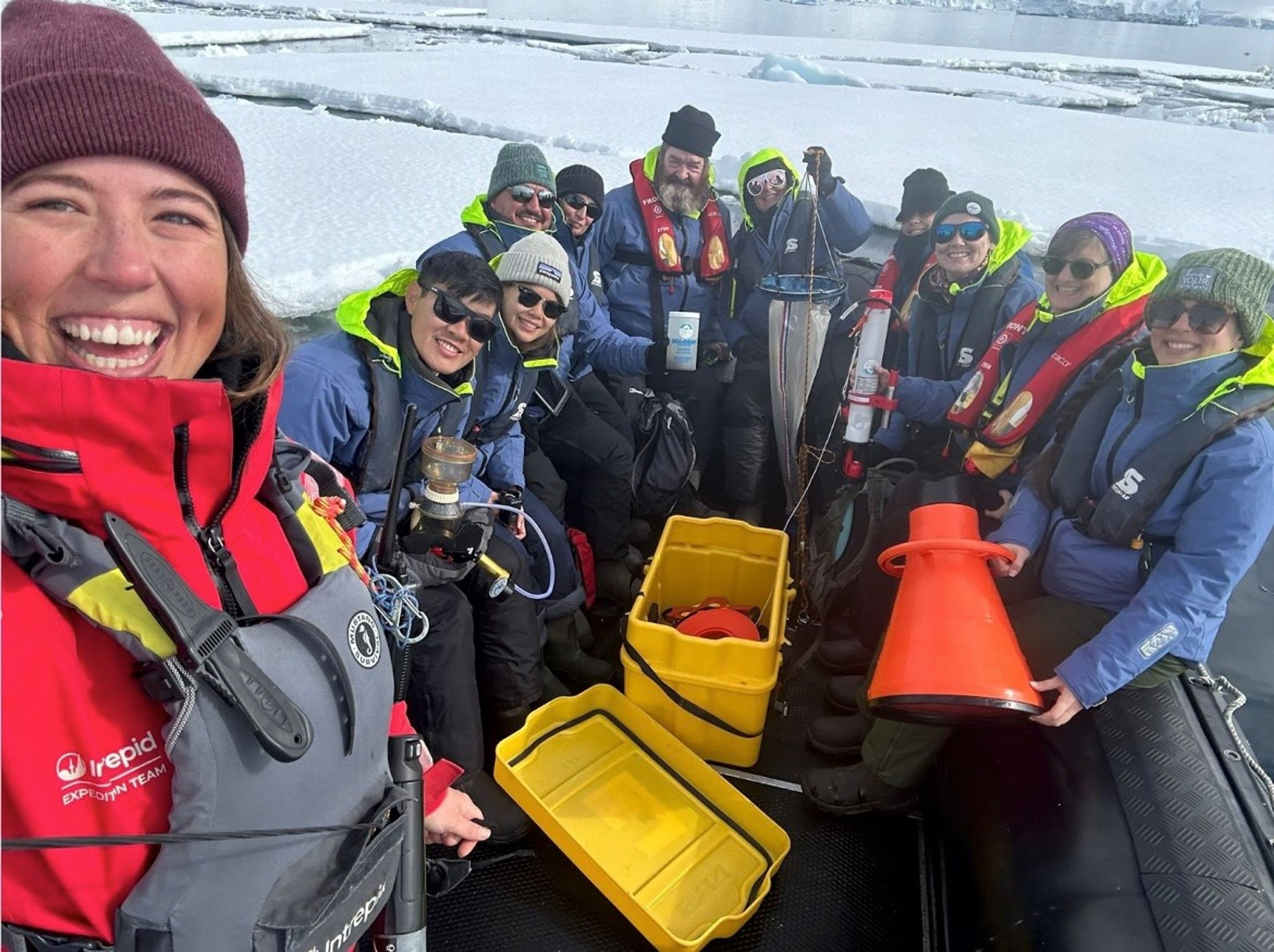3 min read
PROJECT
Determining Muscle Strength in Space-flown C. elegans
SNAPSHOT
Loss of muscle mass and strength in astronauts remains an issue for space exploration. Caenorhabditis elegans (C. elegans), a nematode species that is 1 mm long, shares common traits with humans and these worms are a good, cost-effective model for studying the effects of spaceflight on muscle. A NASA-funded research team has developed a new device called the NemaFlex chip to measure muscle strength over multiple generations of worms born and raised on the International Space Station (ISS).

As NASA plans for long-duration spaceflights, maintaining muscle mass and strength will be critical for astronauts who embark on missions that expose them to long periods of microgravity and radiation. The lack of gravity experienced by astronauts during spaceflight is responsible for the loss of muscle mass and strength. To develop possible countermeasures, scientists hope to better understand exactly how exposure to the space environment alters muscle gene expression, leading to muscle loss and reduced strength.

The NASA-sponsored Micro-16 experiment team at Texas Tech University recently developed a new device, called NemaFlex, to enable continuous measurement of worm muscle forces. The NemaFlex microfluidic device contains a “forest” of tiny micro-pillars. As the worms crawl through the device, they exert muscle forces that deflect the micropillars. Scientists can measure the muscle strength of the worms based on this pillar deflection. Researchers have used this NemaFlex device on Earth to show that defects in >muscle contraction proteins lead to a decline in worm muscle strength.
NemaFlex, along with cultures of live worms to be studied and measured in space, was launched to the ISS on February 20, 2021 as part of the Micro-16 experiment. To use the NemaFlex device, astronauts inject the live cultures of C. elegans from the culture bags into the NemaFlex unit using a device called the Worm Loading Apparatus (WLA). The NemaFlex chip includes a viewing window placed over a camera to capture video of the worm activity for scientists to analyze on Earth. Multiple generations of space-reared C. elegans are being grown, observed, and measured during the Micro-16 experiment. The flight measurements will be compared with the results of muscle strength and gene expression analyses for worms bred on Earth.

Micro-16 seeks to provide researchers with a better understanding of how spaceflight-dependent changes in gene expression are linked to muscle function. Results from this experiment may support the development of countermeasures to maintain crew member health during extended missions. Successful measurement of muscle strength in flight will demonstrate that C. elegans is a comprehensive genomic model for studying muscle physiology changes in space and may enable meaningful translation of discoveries made in C. elegans to astronauts. The spaceflight experiment may also have important implications for sarcopenia (a syndrome characterized by progressive and generalized loss of skeletal muscle mass and strength that is an urgent public health problem on Earth). Additionally, it may produce a terrestrial model for testing potential therapeutic interventions to mitigate the decline of muscle strength during spaceflight.
PROJECT LEAD
Siva Vanapalli, Ph.D., Texas Tech University
SPONSORING ORGANIZATION
The Biological and Physical Sciences Division’s Space Biology Program







